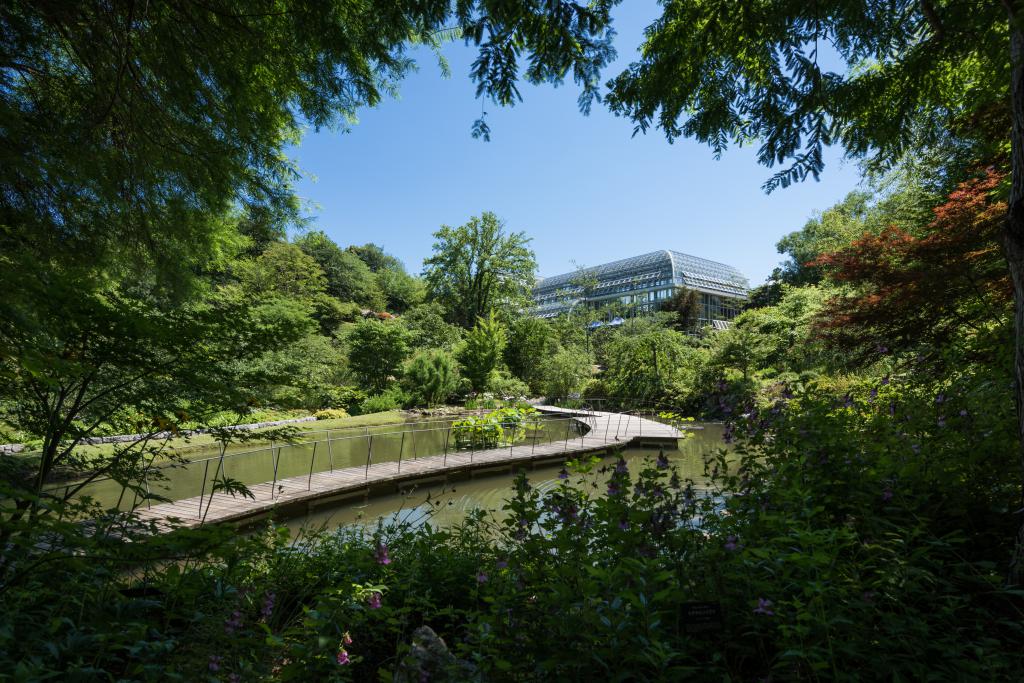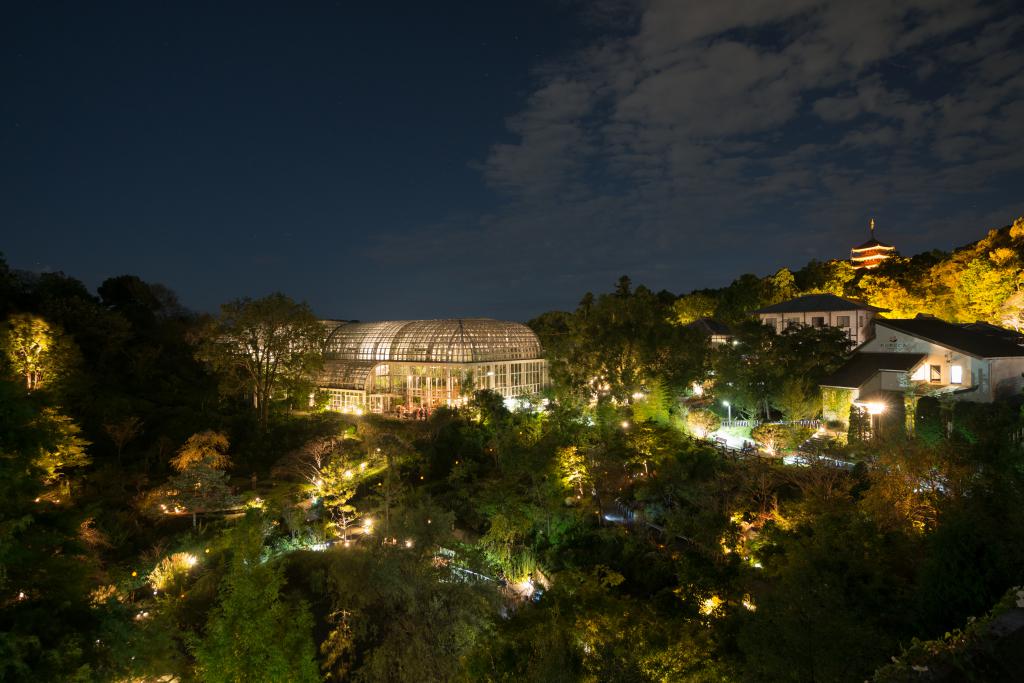What to see
Herbarium
Our botanical garden's main research facility is the "herbarium" where we manage and store all plant specimens. Established in 2000, there are now around 300,000 specimens in the herbarium with the majority collected from Kochi prefecture. The herbarium research facility also participates in yearly activities in Burma (Myanmar) to collect foreign specimens to help researchers identify the composition of Asian plant flora.
Although not open to the general public, with a reservation, it is possible for academic and educational institutions to visit the herbarium for research or educational purposes. The herbarium is open 09:00 - 16:30 on weekdays.
Research>>
Since its establishment, the Makino Botanical Garden has directed its research efforts towards discovering, understanding, and documenting plant biodiversity. Research efforts are not only focused in Japan, but the Garden has also extended its research efforts to the Republic of Myanmar.
More information regarding the Garden's Research efforts in Japan can be found in the Garden's 2009 publication, "Flora of Kochi." Any updates on the flora since the original publication can be found in the semiannual newsletter. Information from these publications has been used to direct conservation efforts for the flora of Kochi.
Since 2000, the Garden has carried out research in Myanmar to uncover the country's mysterious floristic nature. Working closely with the Myanmar Ministry of Natural Resources and Environmental Conservation Forest Department, the Garden was able to carry out research activities in various locations, including the first botanical research in the highly biodiverse Natma Taung National Park since the 1900s. The diverse ecosystem in the park offers new perspectives on the plant flora of Asia. After years of exhibitions, the Garden now houses over 24,600 specimens of vascular plants from the Chin and Shan States, as well as the Mandalay Division.
To protect and ensure sustainable development of Myanmar's plant resources, the Garden has also been participating in a partnership program supported by the Japan International Cooperation Agency since 2006.
Conservatory
The conservatory has many rare varieties of foreign florae. There are multiple exhibition areas in the conservatory, including tropical, dryland, water garden, jungle, and an area full of plants that are used for industrial resources. There is also an observation deck inside the conservatory to permit observation of the plants from above. As the flowers planted inside the conservatory are carefully selected and the time of blooming is meticulously calculated, flowers bloom in the conservatory all year round.

Other areas in the Botanical Garden
In addition to the greenhouse, there are also many other areas in the Botanical Garden. The main entrance, also known as the Kochi Ecology Garden, displays various wild plants of Kochi Prefecture, from the Pacific seashore to the lofty peaks of the Shikoku Mountains.
The Botanical Garden is divided mainly into the North Garden and the South Garden. In the North Garden, you can see views of the plains and mountains of eastern Kochi. Dr. Tomitaro Makino’s beloved cherries and azaleas bloom in Spring, covering the northern slope of the mountain. In Autumn, yellow Patrinia and Japanese clover flower provide a stunning view as well.
The South Garden was formerly part of the Chikurinji Temple and was designed to complement existing pathways and temple features. Walking in the garden, you can appreciate a variety of horticultural displays. Many other features are located in the South Garden as well, including the greenhouse, Tosa Kanran Center (showcasing Cymbidium kanran named after Dr. Makino), and wild azaleas at Ketsumo Hill and Konkon hill. You may also find the 50th Anniversary Garden here, which is a garden complete with ponds and gorgeous surroundings. You can relax and enjoy the changing seasons on the benches by the ponds.
Exhibitions
The Garden hosts permanent exhibitions at its Exhibition Hall along with special exhibitions 2-3 times a year. The permanent exhibition, "Life of Tomitaro Makino" features original illustrations and photographs to describe famous botanist Dr. Makino's life. Also displayed regularly is an interactive exhibit in the "Plant Life" area. The hall is equipped with a cafe that has the views over the Courtyard Garden, in which are located 250 species of plants studied by Dr. Makino.

Surrounding Attractions
Kochi is a prefecture full of attractions, with many located nearby the Botanical Garden. About 200 yards away from the Garden is Godaisan park, which includes an observation deck with great panoramic views and the famous Chikurinji Temple. The observation deck offers an excellent view of the city and Urado bay, especially stunning during nighttime it has earned the title of Kochi's premier night view. Chikurinji Temple which is the 31st temple on the Shikoku 88 Temples Pilgrimage (Henro trail), is known as a scholastic institution that not only attracts pilgrims but also many tourists and students.
